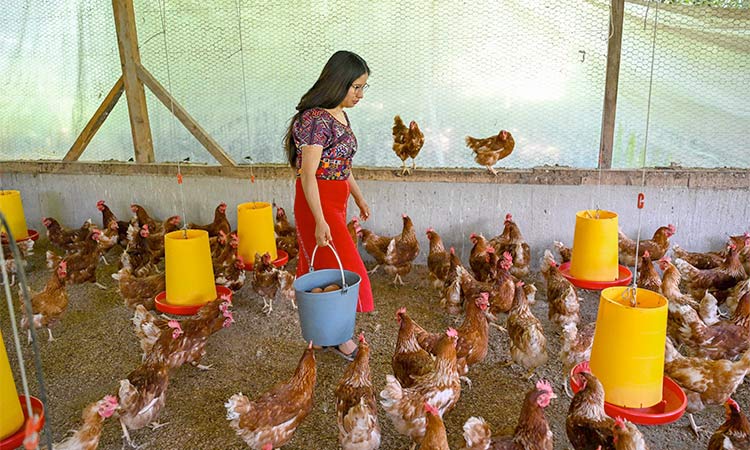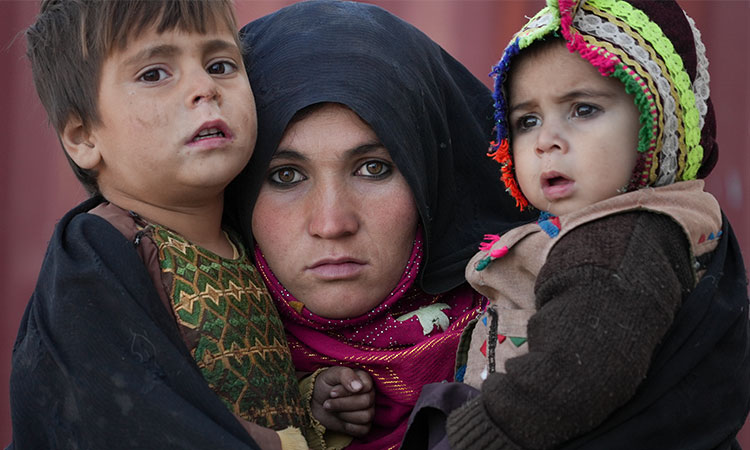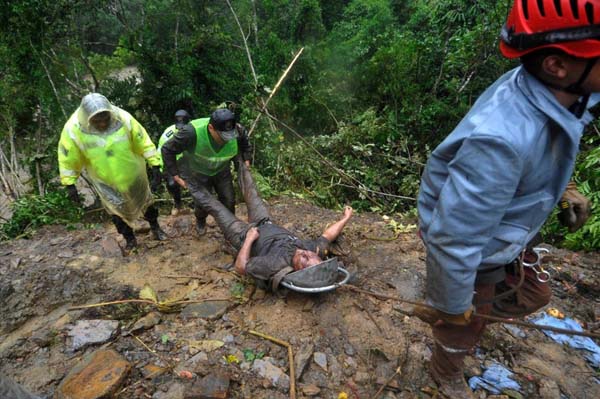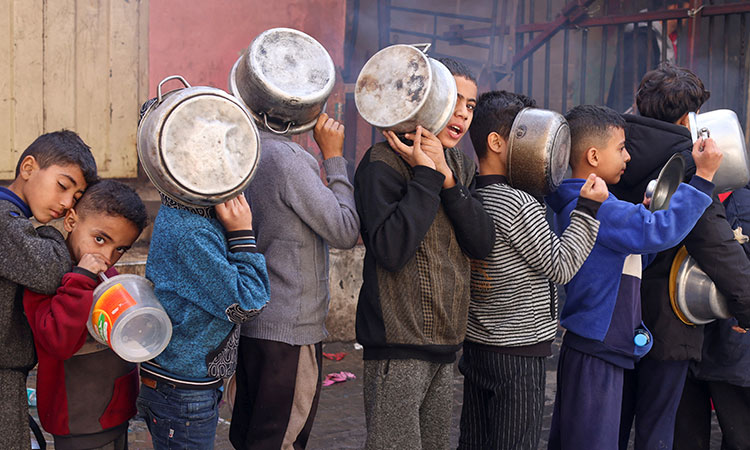Hunger stalks Guatemala’s Mayan highlands

Peasant Rebeca Perez collects the eggs she will later sell, in the municipality of Santa Maria Nebaj, Quiche Department, Guatemala. Agence France-Presse
A few tortillas and a half bowl of reheated beans were all Maria Concepcion Rodriguez had to feed her six children in the isolated village of El Aguacate, one day in August. Only her three-month-old breastfed baby had height commensurate with her age. The others were stunted by undernourishment. They looked too young for their years.
Juan Carlos is the fourth oldest. At 5 years old, he stands at just 95 cm tall (roughly 3 feet.) He is too short for his age, or stunted, according to the World Health Organization standards.
In 2022, 44 per cent of children in Guatemala fell outside of the normal height-for-age range, according to UNICEF.
When food runs out, Rodriguez, 30, asks neighbours for what they can spare. “If they don’t have it, then we don’t eat,” she said, speaking the Mayan language Achi. Like hers, scores of families in El Aguacate don’t have enough on their plates.
Guatemala’s rate of stunting is the highest in Latin America, UNICEF data shows. The rate is more than double that of the region’s second highest, Ecuador. Globally, only seven countries have higher levels than Guatemala, which is considered an upper-middle income country. As much as a quarter of Guatemala’s population — up to 4.6 million people — suffered food shortages over the past year, the highest rate since a system called the Integrated Food Security Phase Classification (IPC) that generates data for the UN began projections for the whole of Guatemala in 2018.
The crisis has coincided with worsening extremes of rainfall and temperature, the fallout of the COVID-19 pandemic, and a period of political instability marked by the fight against corruption. The weather extremes echo predictions by the UN’s Intergovernmental Panel on Climate Change of intensifying drought and its impact on agriculture and food security in a region called the Central American Dry Corridor, which Guatemala straddles.
Over the past decade, countries in the Dry Corridor have been hit by longer and deeper droughts as well as a series of hurricanes, causing widespread crop damage. On a trip to the Guatemalan regions of Alta Verapaz and Baja Verapaz, Reuters met 10 families crippled by food insecurity, crop damage and heavy debts from migration attempts. All said they’d noticed less rain in recent years. At least 20 children seen by Reuters suffered severe malnutrition. Guatemala has an agricultural economy reliant on coffee, sugar, corn, and beans.
The weather extremes being experienced in the Dry Corridor, which the UN considers highly climate-vulnerable, are in line with scientists’ predictions. Hunger has spread rapidly in Guatemala over the past ten years, according to projections generated by the US Agency for International Development (USAID). At least 127 deaths among young children were suspected to be linked to hunger in the first nine months of the year, up from 96 in the same period last year, Guatemalan government data shows.
There is growing consensus that crop damage from climate change is among the complex reasons for food shortages, and migration decisions, in Guatemala, a view supported by the UN Food and Agriculture Organization, a dozen experts consulted for this story and the US State Department in a statement to Reuters. “It is worse than ever, people in the countryside are starving,” said Donald J. Planty, former US ambassador to Guatemala who now runs a consulting firm that works in Latin America. He said the United States was “just waking up” to the climate impact on hunger and migration in Central America.
A US State Department official said that along with other factors, “the increasingly severe impacts of climate change can serve as a powerful determinant in decisions to leave rural homes in search of a better life,” and that Washington was stepping up efforts to build resilience to climate change in Central America.
Guatemala’s health ministry said climate change, Russia’s war in Ukraine, inflation, and COVID all threatened food security in Guatemala and elsewhere. In a statement to Reuters, the ministry highlighted that IPC projections for late 2023 showed a slight improvement over a year ago. They remain worse than previous measured years.
Outgoing President Alejandro Giammattei, himself a medical doctor, launched a national nutrition plan in 2020. In an interview, President-elect Bernardo Arevalo, due to take office in January, said hunger and migration were tightly linked. To address them his government will invest to counter a “historical marginalization of Indigenous populations,” he said.
At a nutrition clinic in San Cristobal, Alta Verapaz, officials deal with severe cases daily. The region has the country’s highest morbidity and mortality from acute malnutrition.
A toddler with cerebral palsy cries in his mother’s arms. Unable to chew, he can only take liquids. He squirms but is mostly quiet as a nurse gently lays him on a digital scale. At two years old, he weighs less than 17 pounds (7.6 kg) — an average weight for a baby aged six months.
“I worry so much that he is not going to recover,” his mother Imelda Pa Xol, said. “I can see he is not gaining weight.”
Next, the nurse straightens his legs to measure him. Uncomfortable, he begins to cry. At 75 centimeters, he is severely stunted. About 87 centimeters is average for his age, according to information in his health records. Across the country, severe malnutrition cases among children under five were up by more than a third at nearly 21,400 as of September compared to the same period a year ago, according to Guatemalan government data.
“This is the most critical year... we have already been seeing this rise in cases and it is getting higher,” nutritionist Sinthia Perdomo said as she cared for children stunted by starvation. “Sadly, some of them die.”
With crops failing, Fidel Eduardo Lopez, 53, has tried to migrate illegally to the United States. Lopez and his wife have noticed rainfall becoming more unpredictable in their farming village of Las Tunas over the years. In the first harvest of this year, the yield from their small corn crop was a quarter of what it should be. Lopez calculates he could pay debts and support his children with just one day’s wages sent from the United States each week. “Things change for the family the moment you arrive,” he said. The number of Guatemalans arriving at the US border soared fivefold from 2020 to 2022, Arrivals were 233,000 in 2022, close to record levels, according to US data.







